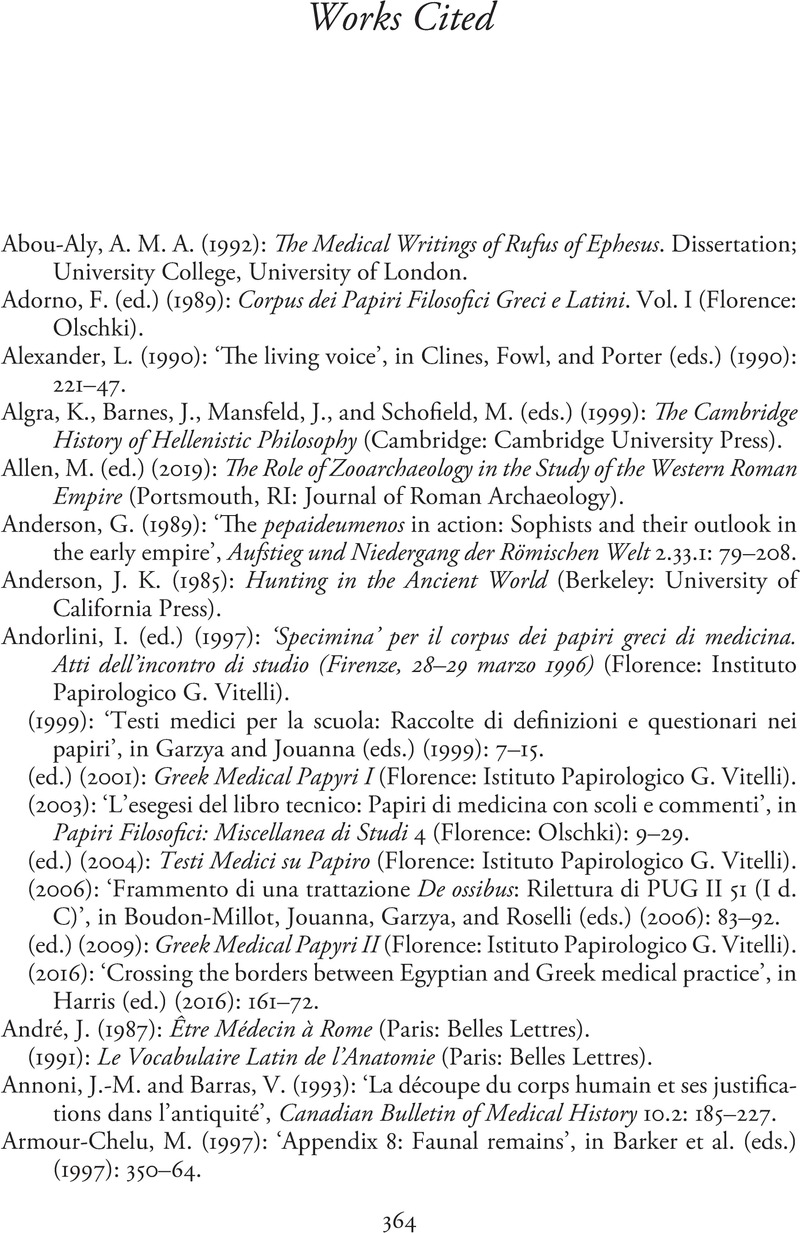Works Cited
Published online by Cambridge University Press: 18 November 2022
Summary

- Type
- Chapter
- Information
- Dissection in Classical AntiquityA Social and Medical History, pp. 364 - 396Publisher: Cambridge University PressPrint publication year: 2022



